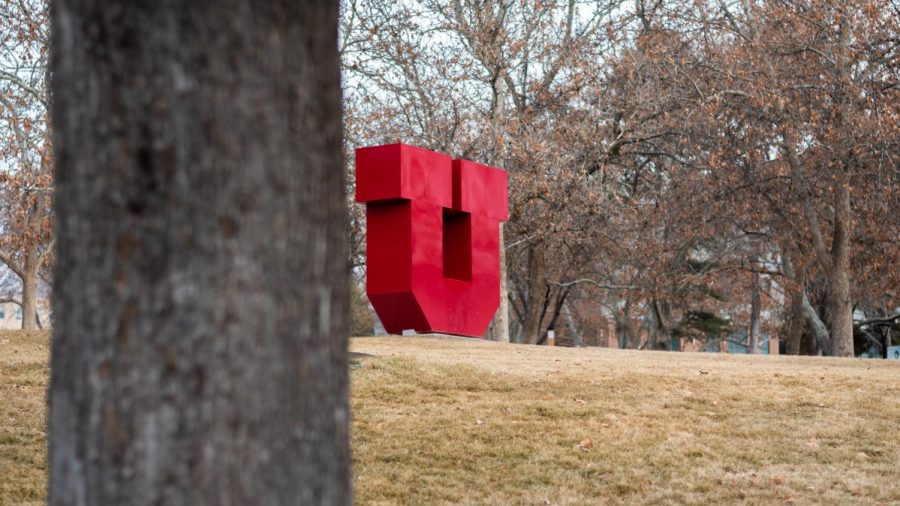Starr: All Gender Non-Conforming Students Deserve Visibility
“Gender inclusion procedures must be adopted by each local school board in the state of Utah to help foster widespread acceptance in our communities and facilitate greater visibility for students and faculty who are gender non-conforming.” (Courtesy Flickr)
April 18, 2020
This year, the Salt Lake City Board of Education strengthened their district’s administrative procedures by updating the gender inclusion policy and laying out transition plans for both students and employees. Updating this policy is essential for cultivating a safe environment for all Salt Lake City students — these changes will not only foster greater learning but increase the development of supportive communities. But gender nonconforming students and staff deserve visibility in every corner of the state. All local school boards in Utah should follow Salt Lake’s lead and adopt similar measures.
Changes for Faculty and Students
While most school districts in Utah do not have gender-inclusive procedures in place for their schools to implement, Salt Lake City School District now has one to cover their students and faculty. Updates to the policy were adopted through the local board’s 7-1 decision in February, and include swapping “his” and “her” language to more gender-neutral pronouns throughout the document, which makes the policy applicable to those who identify outside of the gender binary. The board clarified definitions like “assigned sex,” “transgender” and “intersex.”
While these changes might not seem like much, it’s important to have clarity and accurate terminology for better policy application. Not only does implementation start on a better foot with more precise definitions, but tolerance is more likely to be achieved when students and faculty refine their understanding of terms, which also can rapidly change.
Another major modification to the procedures includes the layout of a district plan for employees who transition, including, but not limited to, practices for official records, department photographs and accommodations for facilities like locker rooms. A workplace transition plan may be developed at the transitioning individual’s request, which offers flexibility and a systemic way forward that wasn’t previously there. This is an essential step in the right direction. Like anyone else, the folks who dedicate their lives to advancing student development and other educational outcomes should feel comfortable to be their full selves.
Visibility Helps Advance Educational Outcomes
Improving outcomes for both faculty and students should be the main goal for local governing bodies of K-12 schools. Having a gender inclusion policy in place can help gender non-conforming students and faculty feel acknowledged and seen, and systemic approaches like procedures and road maps allow everyone to be on the same page. Robert Moolman, the executive director of the Utah Pride Center, said it best when speaking to the board’s changes: “It is important for all of us to recognize the importance of somebody being seen for their whole selves and being accepted for their whole selves.”
We live in a world where LGBTQ+ and gender non-conforming youth may experience “elevated risk for negative mental health outcomes, parental abuse and rejection and inadequate access to medical care and housing,” according to many indicators. Our schools should be doing everything in their power to increase student resources, enhance inclusive policies, improve curricula and ensure that faculty members are supportive. Setting district-wide policies like Salt Lake City did is only the beginning for developing inclusive and safe learning environments. Other areas of the state need to catch up.
Building Supportive Communities
Fall enrollment for all schools in Salt Lake City School District totaled to just over 23,000 students last year. This policy will impact not only those individuals who are gender non-conforming, whose well-being should be one of the district’s primary goals, but potentially everyone within the district’s bounds will benefit.
Conversations about identity are easier to have at school, at home and in the broader community when terminology and inclusive strategies have already been embraced by the local K-12 system. It can be hard to speak to matters like gender identity and gender expression without having definitions and baselines as a starting point. Implementing these policies and terms normalizes the conversation and is much more likely to produce a thoughtful and tolerant community than the alternative, which is to continue acting like gender non-conforming students, faculty and individuals don’t exist.
Gender inclusion procedures must be adopted by each local school board in the state of Utah to help foster widespread acceptance in our communities and facilitate greater visibility for students and faculty who are gender non-conforming. How can we expect anyone to teach or learn if they are afraid, harassed or feeling rejected by a system that’s supposed to foster their development? It is critical for everyone, especially our young neighbors and family members in the K-12 system, to feel entirely acknowledged and seen, and Salt Lake City’s policy changes are a critical start to that process.








